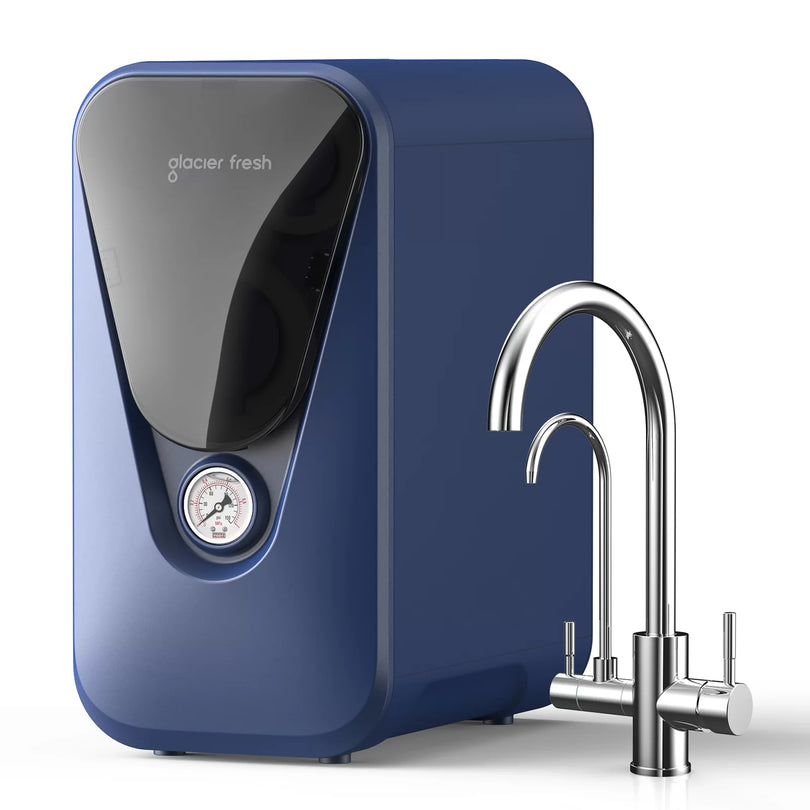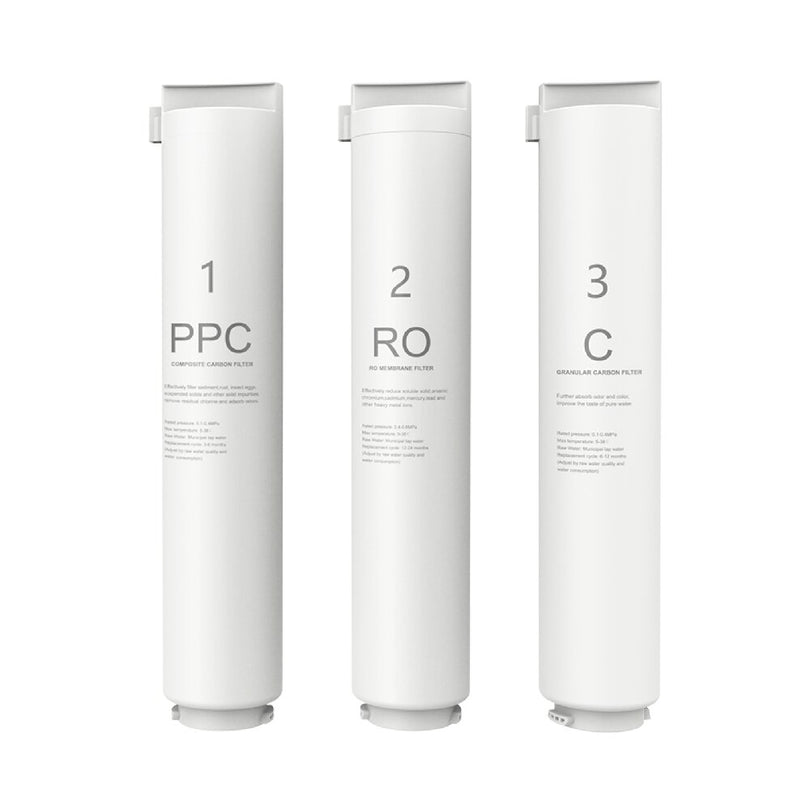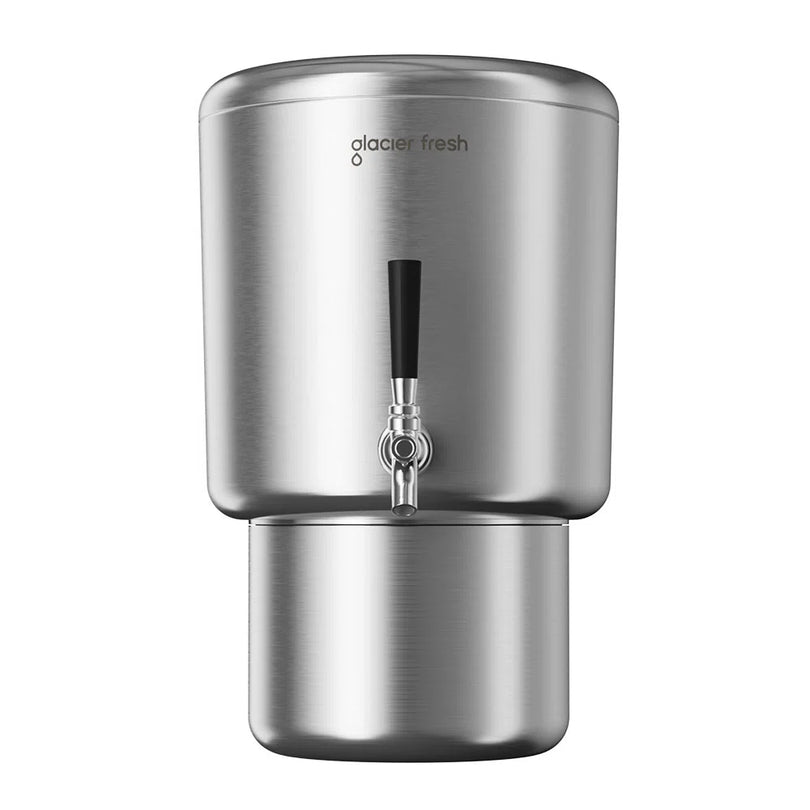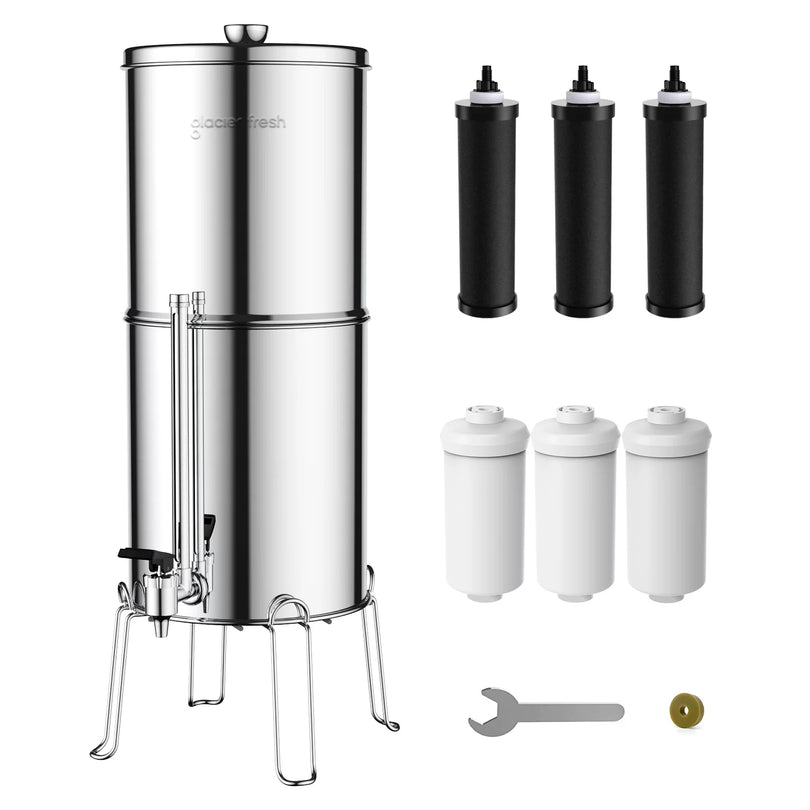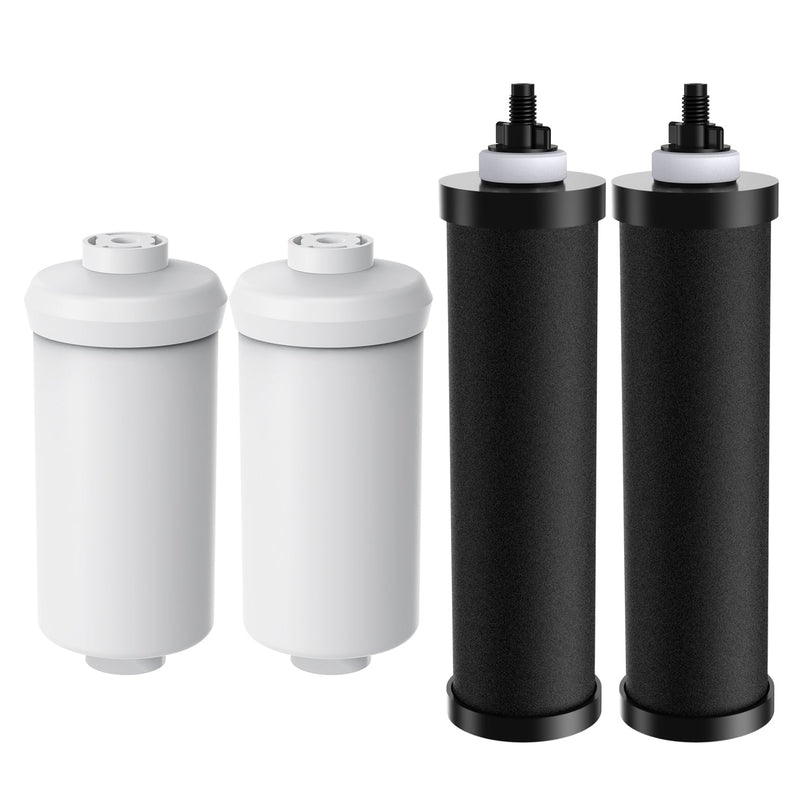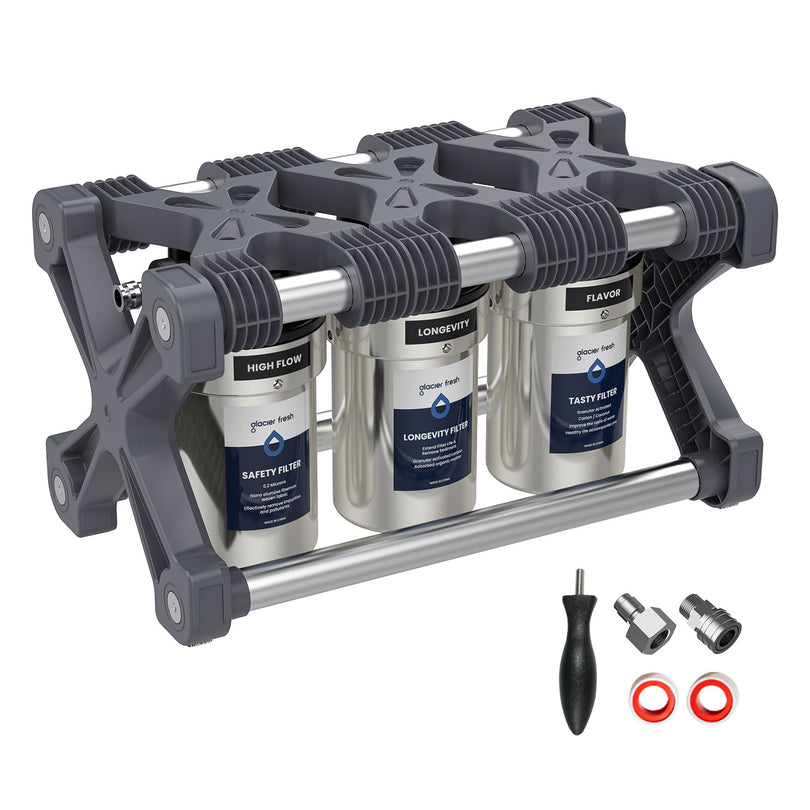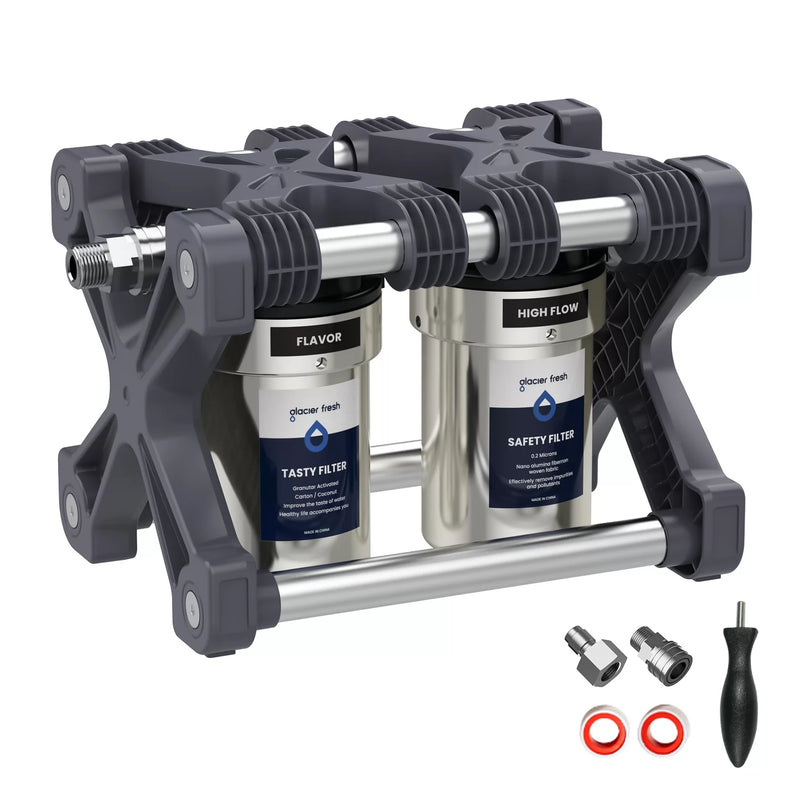Table of Contents:
What are the Points of use of Water Purification Systems?
Benefits of Using a Point of Use Water Purification System
Different Types of Point-of-Use Water Filter Systems
Key Factors to Look for in Point-of-Use Water Filtration
Recommend the Top Point of Use Water Filter
Maintenance Tips for Point of Use Water Filtration Systems
FAQs
Conclusion
Ensuring healthy and clean drinking water has now become a concern for households, RV owners, and small offices in the United States. With concerns about contaminants, old aged plumbing, and unequal municipal water quality, more individuals are resolving to consider the use of the point of use water purification systems as their trusted on-demand bottleneck filtration system.
These small and efficient systems will add to the quality of drinking water without full-body filtration in the homes and will therefore be an intelligent, convenient, and cost-effective option. In this article, we will look at what such systems are, their advantages, their major types, the best ones, and their care.
What are the Points of use of Water Purification Systems?
Point of use water purification systems are water filtration systems that are installed on a specific tap or point where the drinking or cooking water is drawn. In comparison with the Point of Entry (POE) systems that do not separate any household water, POU systems target the region of a kitchen sink or a bathroom faucet, or a countertop.
The systems cleanse the flavor, clarity and purity of water, through the removal of toxic substances, including chlorine, heavy metals, sediments, pesticides, bacteria and the volatile organic compounds (VOCs). Activated carbon filtration, gravity filtration, or UV purification can be used, depending on the form of reverse osmosis they can employ.
The reason behind the popularization of POU systems is that they filter the water that is to be consumed effectively, as well as contributing to the overall performance, waste reduction, and higher efficiency.
Benefits of Using a Point of Use Water Purification System

Here are the key advantages of a POU filtration system—corrected and simplified:
Targeted Filtration
They filter only the water used for drinking and cooking, ensuring maximum purification where it matters most, improving overall water quality without wasting energy or resources on water that doesn't directly affect your well-being.
Improves Taste & Removes Odors
Chlorine and unpleasant smells are removed by activated carbon and RO systems, which can not only enhance the taste of water, but also ensure it is free from harmful substances.
Cost-Effective & Eco-Friendly
POU systems save money and plastic waste and reduce the consumption of bottled water, making a significant contribution to a cleaner, more sustainable planet.
Compact & Space-Saving
The POU systems can fit in apartments, RVs, and offices because they are portable and quickly installed. These systems can be either placed under sinks or on countertops and do not need big installations, maximizing available space while providing high-quality filtration.
No Power electric (Gravity Systems)
Units powered by gravity do not need electricity, and so are ideal in cases of emergency, living off-grid, or in the outdoors, offering a convenient, eco-friendly option that ensures clean water.
In general, POU systems are the most appropriate combination of purification performance, convenience, and cost.
Different Types of Point-of-Use Water Filter Systems
There are a number of designs of point-of-use systems to suit the requirements of different needs:
1. Under-Sink Systems
These systems are installed directly under a sink, connected to the cold-water line, and in many cases, it has a dedicated faucet. They offer high-capacity filtration that can be used on a daily basis.
2. Countertop Systems
Placed on a counter or mounted near the sink, these systems are easy to install, portable, and perfect for renters or RV travelers. They provide high-quality filtration of water while minimizing counter space.
3. Gravity-Fed Systems
These systems require no electricity or plumbing. Water is poured into the upper chamber and filtered naturally through the media. They are ideal for emergencies, outdoor use, and off-grid living.
4. RV Water Purification Systems
Created to meet the specific requirements of the recreational vehicle, these RV water filters are used to deal with some special issues, including the contaminants inside the tank, the siltation of the tank, and the fluctuating water supply.
Key Factors to Look for in Point-of-Use Water Filtration
In choosing a POU system, put into consideration the following factors:
Filtering Technology: Reverse osmosis is the most purifying among them, ensuring that reverse osmosis(RO) water is safe and healthy to drink, carbon filtration tastes better, and the use of gravity filters is very portable.
Capacity and Flow Rate: Greater GPD (gallons per day) is enhanced to provide faster delivery of the purified water. Choosing the appropriate GDP can meet your daily demands efficiently.
Certifications: Seek out NSF/ANSI standards for contaminant reduction, which guarantee the system has been tested and meets rigorous performance standards for removing harmful substances like lead, chlorine, and bacteria.
Ease of Installation: There are systems which involve a plumbing job, and there are others that are plug-and-play. Choose a system that is based on your comfort with installation and matches your space’s requirements.
Filter Lifespan: Long filters reduce the need for frequent replacement, which helps save on time and cost of maintenance.
Water Source Compatibility: Different systems may be optimized for specific water qualities. Therefore, make sure that the system is compatible with city water, well water or RV water.
These factors will assist you in the selection of the appropriate solution among the samples of point-of-use water purification systems.
Recommend the Top Point of Use Water Filter
Below are the top recommended systems based on efficiency, quality, ease of installation, and user experience.
Glacier Fresh U03 Reverse Osmosis System (800 GPD) – Under-Sink
The Glacier Fresh U03 Under-Sink RO System is designed to suit homes with high-capacity ultra-clean drinking water. With a maximum flow rate of 800 gallons/day, it has a high flow rate and a spectacular reduction of contaminants. The system is designed in a tankless version, has multi-stage filtration, and has a smart indicator that notifies you when filters require changing. It is small enough to fit under the sink without wasting space and offers high-quality purification.
In addition to the good purification capabilities, the U03 is made to be easily installed. A quick-connect system is more affordable in terms of setup time, and the leak protection is built in to increase the safety and reliability of the system in the long term. It is, however, an environmentally friendly choice for daily drinking and cooking as its operation is quiet and consumes less water. For those using well water, it is safe to use a reverse osmosis system for drinking, as it ensures thorough purification and removes contaminants.
Glacier Fresh 2.25 G Countertop Gravity Water Filter System
This is a gravity-feed system made of stainless steel and is a preferred choice of individuals who like non-electric portability. The 2.25 G Countertop Gravity Water Filter System, with its 2.25-gallon capacity, features high-performance filters that eliminate most contaminants while retaining necessary minerals. It is good when at home, or offices or outdoors, or for emergency preparedness. It is a reliable countertop filtration system with its overall robust design and easy operation, which are convenient.
Another reason why the system is a convenient solution during power cuts or at times when access to clean water is unreliable is its independent design, which is based on gravity. It is made of stainless steel, which is resistant to corrosion, and the long-lasting filters minimize inconvenience caused by constant replacement. It is a flexible unit that provides reliable purification performance regardless of the environment.
Glacier Fresh RV Reverse Osmosis System
The Fresh RV Reverse Osmosis System is RV-specific, and this dual-layer system guarantees clean drinking water regardless of where the road leads you. The RO filtration has the ability to remove dangerous pollutants that are commonly present in the water supplies of campgrounds, such as sediment and chlorine. It is small, simple to carry, and consumes less water- it is an outstanding option for tourists who want to have a high level of water purification anywhere.
This RV system is also designed to survive the vibration, temperature change, and fluctuating pressure that are usually encountered in the course of travelling. The roughness and the low maintenance of the model make it ideal for long-distance travel, camping in season, or full-year RV living. It is also continuous in flow and thus, one will always get fresh and purified water whenever they need it.
Maintenance Tips for Point of Use Water Filtration Systems
To maintain it, ensure optimum performance, follow the following maintenance practices:
Change filters at the appropriate time: Timely change of filters as per the schedule suggested by the manufacturer will make sure that the process of filtering is at an optimal level.
Clean elements of a system regularly: Wipe housings, faucets, and tanks with a wipe to prevent the development of minerals or bacteria.
Sanitize system elements regularly: Clean housings, faucets, and tanks with a wipe to stop mineral or bacterial growth.
Check water pressure: Maintain adequacy of pressure in your system to ensure that your system is well-filtrated, because low water pressure can lead to a reduced filtration rate and less effective removal of contaminants.
Monitor taste and flow rate: A decrease may indicate a clogged filter or a problem with the system. Therefore, regularly monitoring can ensure your system is functioning properly.
Spare filters: This helps avoid spillages in water quality and prevents problems like poor taste or reduced water flow, providing a safe drinking water environment.
Regular repairs will secure the life span of your system and provide clean drinking water all the time.
FAQs
What are the points of use of water treatment methods?
The most well-known are reverse osmosis, activated carbon filtration, UV purification, and gravity-fed filtration. They all deal with various contaminant types and end-user preferences.
What is the difference between POE and POU?
A POE (Point of Entry) system will sieve all the water as it flows into a home, and POU (Point of Use) filters the water in particular outlets like a bathroom or kitchen sink.
How much do the point-of-use water filter systems cost?
Simple countertop filters cost between $80, and high-capacity reverse osmosis systems cost between $500 and above. Depending on the technology, capacity, and filtration performance, the costs differ.
Conclusion
As the quality of water remains an issue of concern, the selection of trustworthy point-of-use water purification systems has never been as crucial as it is today. These systems provide clean, safe, delicious water when and where you need it, in addition to bringing convenience and saving on costs, as well as providing better elimination of contaminants.
Be it the under-sink RO system, on-the-counter solution, or a reliable RV filter, the correct POU system gives you confidence and long-lasting comfort of healthier hydration in your home.

